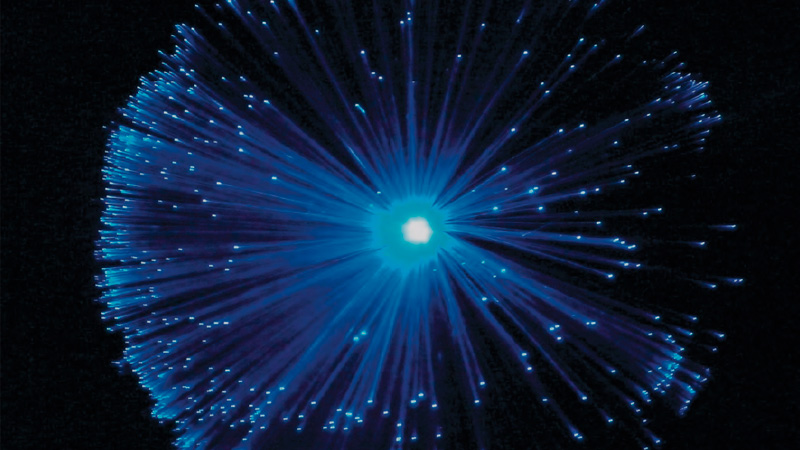it has been a race: a staff of scientists working at the Large Hadron Collider1 (LHC), built by the European Organization for Nuclear Research (CERN: Conseil Européen pour la Recherche Nucléaire) beneath t he Franco-Swiss border, was competing against scientists working at the Tevatron Collider in Illinois (USA) for verifying the existence of an elementary particle called the “Higgs boson” and measuring its energy (which is equivalent to its mass). In 1964 Peter Higgs2 proposed for the first time the “Higgs field” and the particle (the boson) related to it. There were five other scientists working on the same subject, and elaborating similar concepts. Higgs’ idea explained why some particles had mass when other particles did not have any. The particle was the key piece of the “Standard Model” puzzle, which intended to incorporate all the observations of physics related to fundamental reality and quantum theory.
Since then, this particle-hunting has occurred. The Higgs boson is a heavy particle, and its production requires powerful accelerators. The Trevatron accelerator in the USA could have found it if its mass had been less, but, at the end, the world’s most powerful accelerator—the CERN’s LHC—reached the goal. If this particle had not been found after measuring all possible mass, it would have been necessary to reformulate wide-reaching physics theories, which implies major reflections, new enthusiastic ideas, and a lot more of work for scientific thinkers. But now the model we have possessed through many years has found instead an exterior verification.
The General Theory of Everything
Nonetheless, there is now a more ambitious goal: the “General Theory of Everything.” It is a model that gathers all the knowledge about scientific reality; it will include the Standard Model, but also quantum and gravity theories. This goal was at hand until a few years ago, when astronomers understood that three quarters of matter in space is what is called “dark matter.” We do not know what it is or where it comes from; it is invisible out of its gravitational field. Actually, it may not exist at all since our understanding of gravity may be wrong. In any case, this general theory now seems to cover a rather small part of everything.
Einstein’s general theory of relativity offers a model that describes the effects of gravity with great precision; quantum theory and the Standard Model provide an increasingly complete description of interactivity on a small scale, but only by taking into consideration the effects of gravity. The verification of the existence of Higgs boson is a step forward toward the validation of the Standard Model, nonetheless, even if it may seem complete and definitive, it does not mean the end of physics, because physics continues to explore the complexity and implications of the theory. And in any case, CERN’s accelerator, or maybe some other one more powerful, may find new particles that show how our knowledge at the moment has not been pushed far enough. There is a likely suspect in the existence of a long list of particles still to be discovered, and which acknowledged, would help us to take one more step toward the general theory of everything.
The energies involved both in CERN’s and in Tevatron’s accelerators are so powerful, that it is unlikely for us to be able to find elsewhere on Earth what we find in them, unless we do not exclude an occasional reaction caused by very powerful cosmic rays that hit us from some point out in space. The real interest in the discovery of the Higgs boson is that its knowledge will offer us a more complete picture of the origin of the universe, of that Big Bang that was at the beginning of everything. As we know so far, from the very instant after the universe’s fuse was lighted up, the fundamental particles began to react in order to produce the “bricks” of the universe: particles like neutrons, protons and others, then hydrogen and helium, and finally the atoms and molecules which form the stars and planets that we see every day around us.
Scientific research has not reached further than the Big Bang: in general—as it is said—because the concept of “before” has no meaning as time began in that moment; or because that very first uniform meteor could not have any information concerning a previous structure or origin, if it existed at all.
The beginning
For those who believe that God was present in the beginning, there are further questions that must be considered in order to conciliate the very first moments of reality with the Christian faith in one eternal God. We believe that time began with the Big Bang; nonetheless God is out of time, and therefore God the creator would not have had any problem creating time along with any other physical reality. But in what terms may we speak about God’s action before (even if we may not use this word here) time began? And how must we understand God’s continual sustainment of creation?
“In the beginning was the Word, and the Word was with God, and the Word was God. He was in the beginning with God. All things came to be through him, and without him nothing came to be. What came to be through him was life, and this life was the light of the human race; the light shines in the darkness, and the darkness has not overcome it” (Jn 1:1-5). Perhaps it is not by chance that these opening words of St. John’s Gospel echoes those from the book of Genesis: “In the beginning God created the heavens and the earth” (Gn 1:1). The New Testament speaks about the continuing role of God through the Son in sustaining creation: “He [the Son] is before all things, and in him all things hold together” (Col 1:17), or: “[The Son] is the refulgence of his glory, the very imprint of his being, and who sustains all things by his mighty word” (Heb 1:3). St. Thomas Aquinas agrees that “the world exists forasmuch as God wills it to exist, since the being of the world depends on the will of God, as on its cause” (Summa Theologiae I, q. 46, a. 1, co.).
In addition to this and to many other ways in which the faith in creation and in God’s love for the world has been expressed, there have also been proposed thorough the centuries many different models explaining how such care is manifested. Many Christians do not appreciate the mechanical model of creation, or the idea that God only chose to create the physical realities that determined the Big Bang, stepping aside after that to let events simply happen: the formation of fundamental particles, Hydrogen and Helium atoms; then heavier atoms and the molecules that we now know; then the formation of planets from the dust of exploded stars; and finally the first forms of life in at least one of these planets. We would like to think that God had and does demonstrate that He is not interested in just being the maker and first spectator of a mechanical process of the creation of the universe. But it is not simple to go from a mechanical model of creation to a model in which God takes continuous care of us.
Does it work like a clock?
There arises a problem when we try to combine God’s work in creation with scientific models. Any material intervention of God in the processes of the universe implies a violation of one or more of the laws of physics, according to which the quantifiable properties of any physical system of the universe do not change if the system evolves. Even the transmission of information from God to the universe must imply at the same time an energy transfer, but science has never found such violations. If that must and could happen, it would undermine the basis of entire scientific thought, as its fundamental principles would be broken. The principle of conservation of energy is a basic principle of science, and anything God does would violate that principle. At the present stage of our knowledge, this is one of the few subject-matters on which science must reject any hypothesis of divine intervention.
We will now ask ourselves how God manifests His love for the order He created. But a mere scientific approach to the problem will not give us an answer. Faith—as Aquinas clearly said—considers God as the source of the universe’s rationality and existence; not because He is a kind of “divine scientist” who bypasses the laws of physics in order to accomplish His own ends. The scientific method at the moment does not allow us to discover how God interacts with the universe; in order to do so, we must find a model that explains correctly all known phenomena and foresees some new elements whose existence may validate it. This model is usually mathematical, and in order to confirm its validity we need two things: first, we need to demonstrate that the values of the physical constants (i.e. the mass and the charge of an electron) are correct; second, it would be good if the model showed us that there are more elements to discover. That model has hypothesized a particle and a field that we call the Higgs boson and the Higgs field; the verification of their existence by CERN is a big step forward for the Standard Model.
Al these models are based on extensive scientific data compilations, which are measured in many ways, and collected through hundreds of years. But they are strictly physical data; therefore they will never explain and predict anything that is not a proper physical phenomenon. The scientific answer to the question about why the universe (or all universes, according to some theories) is how it is or how it came to be is: “because matter and energy are this way.” If we stay within the range of science, we cannot ask ourselves further questions.
Faith and science
Today scientific theories, on the whole, are not refuted. They are approved and accepted as they are a part of more general theories. This is why Newton’s laws of motion are still here to tell us what will happen if we drive our car on the wrong side of a busy street, but those laws are true only if the bodies have a random mass (if it is not as small as an electron, or as big as a star) and if they have basic speeds (not higher than a fraction of the speed of light). Aside from these limitations, theories like Einstein’s theory of relativity show how the laws of Newton—inside that range of mass and speed—are just an approximation to a more general theory. Now maybe Einstein’s theories are waiting to be considered part of something more general and even more complete.
But these developments of scientific theories must not either develop distrust in science or the believe in God as a “stopgap,” when there is a gap perceived in actual scientific knowledge which may convince us that there is room for something else that science is not able to explain, and that may only be explained by resorting to a supernatural source, which is God. Our faith allows us to trust in the laws of science (and in the validity of scientific efforts) in order to believe that they are an integral part of God’s creation, rather than something that must be explained apart from or in spite of God’s love for creation.
Translated by Nicolás Olivares Bøgeskov



